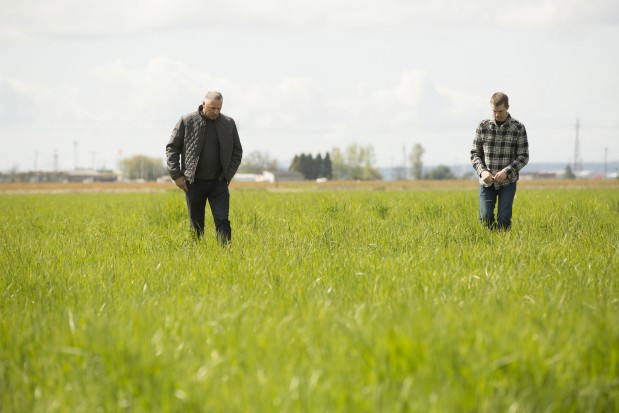Have you ever wondered–What the hay is important about hay?
Make Hay While the Sun Shines
In 1845, Victoria Day was first celebrated as a holiday by the Canadian government. It recognized the birthday of Queen Victoria on May 24 with cannon salutes, picnics, and parades. Contemporarily, the weekend, known simply as “May Long”, is chock-full of summer activities: fifth-wheels, fireworks, and first vacations. If you’re a farmer, this weekend might draw to close a busy season of ‘first-cut’, but the work doesn’t stop there. For many BC farmers, May marks the beginning of a season of growth and harvest.
This May Long Weekend, as families enjoy the transition to summer, so too do farmers by harvesting, raking, and baling, all in preparation for the season ahead. Central to life on the farm, farmers don’t typically observe statutory holidays. Since Victoria Day falls in the middle of a busy hay season, this holiday is no exception.
What is hay?
First, it should be noted that hay comes in many shapes and varieties—while some producers choose to grow a legume like alfalfa, others may choose to grow grasses such as oats or timothy depending on what’s best for their soil or even what their cows enjoy.
Second, it should be noted, that like mowing a lawn, a hay field gets cut and grows back. Only, hay grows back a little different each time. First-cut is the first harvest taken off the field for the season; it is typically high
in fiber content and low in protein. Certain crops, such as alfalfa, can be cut before the bloom in order to produce a higher quality product.
The following cuttings come in softer. Second-cut has a high leaf-to-stem ratio, is low in fiber and high in protein. Second-cut hay grows the fastest because it is typically the hottest parts of the season, like July or August; this hay is aromatic and richer in nutrients than its counterparts.
If the growing season permits it, a farmer might be able to get a third-cut (or fourth-cut, fifth-cut, etc.). Due to cooler weather nearing the end of the growing season, this harvest is also seen to have a high leaf-to-stem ratio leading these cuts to be nutrient dense, but low in fibre.
Process of Cutting
A hay crop can’t just get cut and baled–it needs to be dried! When hay is initially cut, it is very high in water content—almost 80% moisture content—and must be laid out to dry.
After it is cut it is fluffed to allow air to engage the bottom layer of feed—this is called tedding. This step is typically done after the morning dew has worn off so that the hay is a little drier. To continue the drying process, the crop is placed into a long row by the wind—this is called windrow. This process allows for surfaces that were previously on the bottom to be dried. Then the hay is made into bales or silage for preservation so that it can be used during the winter months as feed for animals.
Life on the farm doesn’t really stop. Since crops don’t take a day off the farmer doesn’t either. When we give thanks for our families and all the food we plan to share together this MayLong Weekend, also think about the farmers. The proverbial line “make hay while the sun shines” is a motto for each and every farmer, not just this weekend, but every weekend of the year.
References
-
“Why Do We Celebrate Victoria Day?” CBC Kids. Web. http://www.cbc.ca/kidscbc2/the-feed/why-do-we-celebrate-victoria-day
Heather Smith Thomas. “Livestock & Pets, Feeding Time.”
Article. https://cpb-us-e1.wpmucdn.com/blogs.cornell.edu/dist/e/1628/files/2016/03/Hay-for-Livestock-2e94rqp.pdf
John Porter “Haymaking 101: Mowing, Tedding, and Raking”
March 23, 2015. Web. https://www.farmingmagazine.com/dairy/forages/haymaking-101-mowing-tedding-and-raking/
Jonathan Gladney. “What is Haylage?” Livestock Links. 2013
Article. http://www.aces.edu/pubs/docs/L/LIVE-0129/LIVE-0129.pdf
Alberta Agriculture and Forestry Release. Web. July 29,2016.
https://www.albertafarmexpress.ca/2016/07/29/your-haying-options-when-the-rain-just-wont-quit/
Frank Mickan. Australian Fodder Industry Association. “Guide to Moisture Content of Hay” Web. https://www.afia.org.au/index.php/resources/hayfactsheets/making-quality-hay/145-guide-to-moisture-content-of-hay



